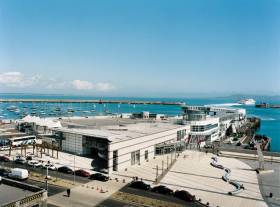Displaying items by tag: Proposed Redevelopment
Ferry Terminal in Dún Laoghaire May Become Tech-Centre
#FerryTerminal - A change of use through a planning application of the former ferry terminal in Dún Laoghaire Harbour, from duty-free shops and passenger services to a 450-job technology cluster, is to be lodged in coming weeks.
The move writes The Irish Times comes as Dún Laoghaire Harbour Company is in advanced negotiations with a preferred bidder for a multimillion euro, 10-year lease on the building.
The plan to redesignate the terminal is an attempt to generate an income from the building, which was opened 22 years ago to facilitate Stena’s Dún Laoghaire-Holyhead ferry service, which was subsequently withdrawn
The Harbour Company is also selling a small parcel of land known as “the gut” at the base of the west pier. Both moves are designed to generate income to meet the harbour company’s core objective of maintaining the harbour itself. Last year the Harbour Company spent €1 million on repairs to the Carlisle Pier and further repairs are needed to the west pier.
Confirming the negotiations on the lease and change of use of the former ferry terminal at St Michael’s Pier, Gerry Dunne, chief executive of the harbour company, said a public tender process had identified a preferred bidder for a 10-year lease on the building.
The newspaper has more on the story, click here.





























































